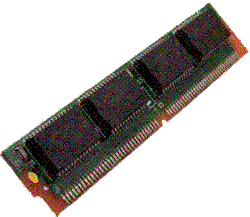Conductors and Insulators
Materials are classified according their conductivity, or
ability to conduct electricity. Metal atoms usually have their
outermost (i.e. valence) electron(s) attached to their parent nucleus
rather weakly. These electrons are easily detached and can flow
freely throughout the metal. They are called free
electrons. The high mobility of the free electrons, and their
large number, make metals good conductors of electricity (and
also heat).
Substances like rubber, glass, wood, etc., on the other hand, have
all their electrons tightly bound to their parent atoms. They have very few free electrons and are therefore extremely poor
conductors.
 Conductors
=> Electric charge can flow very easily, that is with very
little resistance, due to the large number of mobile free
electrons.
Conductors
=> Electric charge can flow very easily, that is with very
little resistance, due to the large number of mobile free
electrons.
Example : Most metals such as copper,
aluminum, iron, gold, ... are good conductors.- Insulators => valence
electrons are tightly bound - few free electrons, thus no
conduction of charge.
Examples: Glass, rubber, plastics,
ceramics, ...
- Semiconductors are
somewhere in between these two extremes. They are rather more like
insulators, in which few electrons are available for conduction.
The conductivity of semiconductors can be controlled by small
amounts of 'doping', the addition of very small, precisely
measured amounts of certain specially chosen materials.
Examples : silicon, germanium,
gallium arsenide, .... . (Practically all electronics, including
computers, are largely based on the use of semiconductors.)


|
|
[The big "Demo" button is for a large
video clip (typically 1 MB); and the small one for a version
reduced in size (typically 100 kB) and quality, but suitable
for download via phone lines].
|
Although dry air is an insulator, humid air can conduct electric
charge to some extent. On a humid day, a charged conductor gets
slowly discharged via the leakage of charge through the air, even
if it is insulated.
If the charge on a conductor is very large, then discharge through the
air can happen via a spark or lightning
©
MultiMedia Physics
2000
 Conductors
=> Electric charge can flow very easily, that is with very
little resistance, due to the large number of mobile free
electrons.
Conductors
=> Electric charge can flow very easily, that is with very
little resistance, due to the large number of mobile free
electrons.